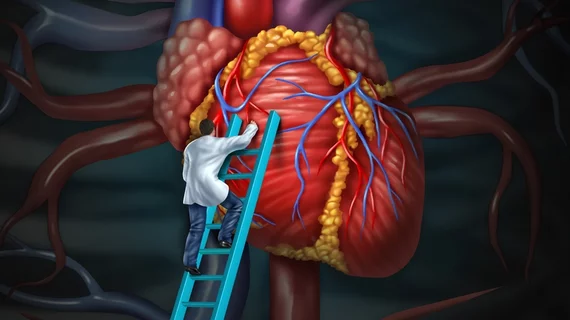Clinicians performing CABG should use arteries from the chest and forearm instead of veins from the leg in certain patients, according to guidelines from the Society of Thoracic Surgeons (STS).
The guidelines, which assessed how the choice of arterial conduits affected outcomes, were published online in The Annals of Thoracic Surgery on Dec. 8.
During the past two decades, the use of CABG has significantly declined, according to the expert writing group that developed the guidelines. An analysis of an STS database found that isolated CABG procedures decreased from 191,581 in 1997 to 146,947 in 2012. After adjusting for the increases in the adult U.S. population, CABG procedures declined nearly 38 percent from 2001 to 2008.
The guidelines group mentioned the decline could have been attributed to improvements in medical therapy and secondary prevention of stable angina, improvements in stent technology and adjuvant medical therapy or patients choosing to avoid the invasiveness and short-term risks of surgical intervention.
The members added that in recent years, patients referred for surgery have had more extensive coronary disease burden and coexisting morbidities such as diabetes, hypertension, chronic obstructive pulmonary disease, peripheral vascular disease, hyperlipidemia and fraility.
For PCI procedures, technologies such as balloon angioplasty and new generations of drug-eluting stents have been introduced in recent decades. However, the group noted that conduits for CABG haven’t changed much and most surgeons do not use multiple arterial grafting.
The group conducted an extensive literature review and analyzed 103 relevant clinical studies that examined the use of potential arterial and venous conduits in CABG procedures.
The members found that targeting the left internal thoracic artery during CABG procedures was associated with improved survival, graft patency and freedom from cardiac events compared with saphenous vein grafts.
However, Gabriel Aldea, MD, a guidelines co-author from the University of Washington, said in a news release that fewer than 10 patients of patients undergoing CABG in the U.S. received two or more arterial grafts, according to the STS database.
The authors recommended using an internal thoracic artery to bypass the left anterior descending artery when bypass is needed; a second arterial graft as an adjunct to the left internal thoracic artery in appropriate patients; and a second arterial graft when grafting coronary targets with severe stenosis.
They also suggested that the heart teams discuss arterial grafts in detail when determining the best use for each patient.
“Current data suggest that a right internal thoracic artery or radial artery graft can be used safely in many, if not most, patients and is associated with improved graft patency and survival,” Aldea said. “However, our research shows that there is an increased risk of sternal wound infection in some patients, so we recommend discussing treatment options with the heart team to determine the most effective graft conduit for each individual patient.”

